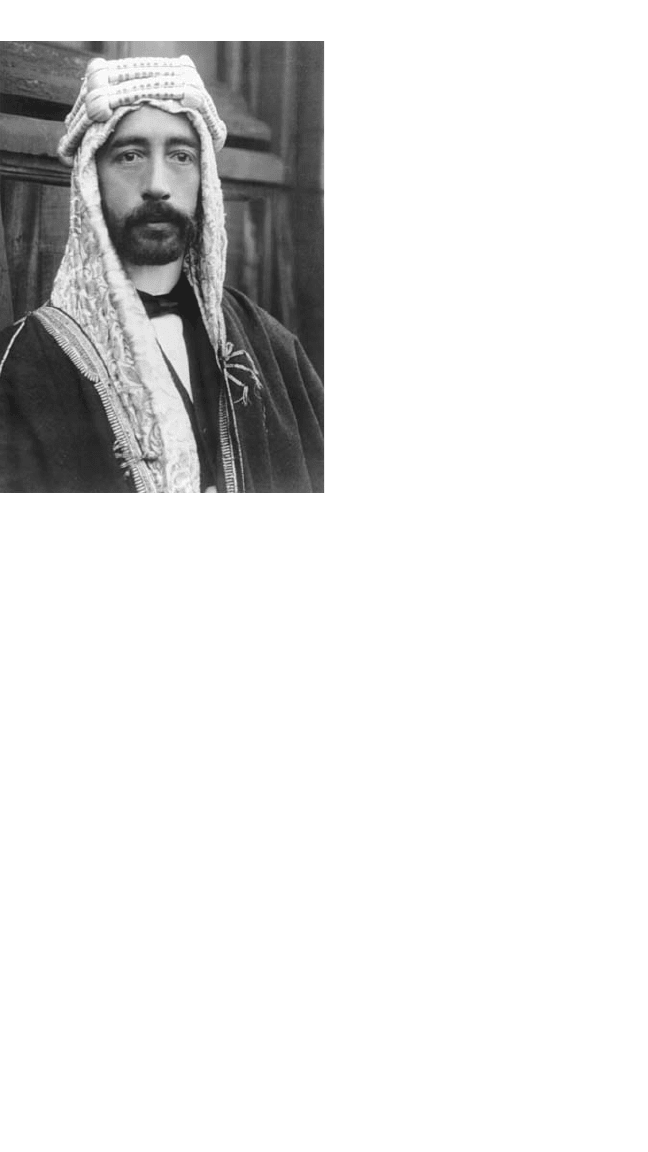Fattah H., Caso F. A Brief History Of Iraq
Подождите немного. Документ загружается.


A BRIEF HISTORY OF IRAQ
162
The Iraqi Monarchy and the Mandate (1920–1932)
After the 1920 revolt, the British and the Iraqi governing elite real-
ized that a new arrangement had to be worked out between the two
countries to placate independence activists as well as to give Britain
a patina of legitimacy in the country. The treaty signed by the new
Iraqi government and Great Britain on October 10, 1922, in essence
restated the mandate. The “obligations” of each country tilted heavily
in Britain’s favor. Iraq agreed to respect the rights of foreigners, includ-
ing foreign missionaries, and to cooperate with the League of Nations.
Britain agreed to respect Iraqi sovereignty while at the same time acting
as adviser on military matters, foreign and domestic, including judi-
cial policies, and, of course, the economy. It provided for Iraqi control
of defense matters but tacked on a military clause that required that
Britain would continue to train and equip the Iraqi military and retain
its military bases throughout the country. Britain was also to prepare
Iraq for entry into the League of Nations. The terms of the treaty were
to last for a period of 20 years, though they were open for revision.
The treaty was met with hostility by the Iraqi press, which after the
uprising was anything but acquiescent, and this temporarily hindered
ratifi cation by Iraq’s Constituent Assembly, as it did not want to appear
to be simply a “rubber stamp” for the British. On April 30, 1923, an
amendment to the as-yet unratifi ed treaty was signed by both parties
that reduced the period of the treaty’s enforcement from 20 years to
four. Nevertheless, the Constituent Assembly only ratifi ed the treaty on
June 11, 1924, after Great Britain threatened to put the matter before
the League of Nations, of which Iraq was not yet a member and which
had mandated British sovereignty over Iraq in the fi rst place.
The Constituent Assembly needed only one month to discuss the
draft of Iraq’s constitution, known as the Organic Law. It was approved
in July 1924 and signed by King Faisal I on March 21, 1925. The
Organic Law went into effect the day after the king signed it. It created
a constitutional monarchy (meaning in one sense that it added itself
to the status quo) with a parliamentary form of national government.
The national legislature was to be bicameral: The Senate was made up
of members appointed by King Faisal, while members of the House of
Representatives were elected to four-year terms. Suffrage was strictly
reserved for men.
In the aftermath of the 1920 uprising, three political parties came
into being in Iraq. One of these represented those essentially Sunni
Iraqis in power, and the other two—the Watani (Patriotic) and Nahda
(Awakening) Parties, both formed by lay Shiis—were opposition

163
BRITISH OCCUPATION AND THE IRAQI MONARCHY
parties. All three, however, were nationalistic and devoted to Iraqi
independence. When independence was achieved in 1932, the parties
disbanded as members transferred their allegiance to other parties and
blocs that had formed around social and economic questions.
Building an Iraqi Army
After the 1920 insurrection, the growth of an Iraqi army was deemed
essential from the British perspective, for not only had the rising dem-
onstrated the folly of putting British troops in harm’s way when local
forces could be relied on to do the job themselves, but the Iraqi elite
itself clamored for an army as a symbol of independence, however
curtailed that independence was in reality. At the Cairo Conference
in 1921, it was thought that a strong army could take over from the
British in a mere four years; this proved to be a serious miscalcula-
tion. A national army was established only after several years of great
perseverance and resolve on the part of Iraq’s fl edgling military elite.
Throughout, the focus on conscription proved to be particularly con-
tentious; one side, composed of the adherents of a centralizing state,
promoted conscription as a tool to incorporate tribesmen into national
service; the other, comprised of representatives of Iraq’s various sects
and ethnicities, worried that conscription would be used to further an
antiminority agenda. The British also opposed conscription as “beyond
the meager fi nancial resources of the Iraqi government” and feared that
tribal rebellions in the provinces would likely draw the RAF into the
fray. Many Iraqis viewed British resolve to stay neutral in the matter as
a further means of keeping their country dependent on Great Britain
(Tripp 2000, 62).
King Faisal’s Role
Other than British colonialist infl uence, the Iraqi nation-state that came
into being largely bore King Faisal I’s imprint. Early photographs of him
in Arab dress portray a man with aquiline features and a grave demeanor,
a man who, for many Iraqis and Westerners alike, came to personify maj-
esty in every sense of the term. Faisal so embodied the characteristics
of Arab nobility and tribal valor that he never failed to impress Western
writers and observers who met him and came to know him well. But
Faisal impressed Arabs and Iraqis as well, for these and other reasons.
Originally a man without a country, he came to exemplify the best that
his new country could offer: intelligence, patience, reserve, and steely
determination. Even his foibles (he was seen by some early observers as

A BRIEF HISTORY OF IRAQ
164
too compliant and self-serving
in the face of the British) were
later interpreted in a different
light by revisionist scholars.
An important historian of Iraq,
the late Hanna Batatu, claimed
that Faisal understood his own
limits and that of his adopted
country so well that, contrary
to fi rst accounts of his rule, he
knew when to jab and when
to feint, as a result of which he
“never danced to British pip-
ing” (Batatu 1978, 332).
Faisal’s political balancing
act came perilously close to
being death defying. He had to
contend with many different
factors, most of which were
at cross-purposes with one
another. First was his duty to Iraq, a country so diverse in its social,
ethnic, religious, and sectarian composition as to be practically unman-
ageable. Every community had its demands, and not all of them sat well
with neighboring ethnicities or sects. By and large, Faisal I relied on two
broad constituencies—the ex-Sharifi an offi cers (mostly veterans of the
1916 Arab Revolt led by Faisal’s father, Sharif Hussein bin Ali, they were
graduates of the Ottoman Military College) and the mostly Shii tribal
leaders of the mid-Euphrates—and acted as a mediator between the differ-
ent interests of both. While not completely representative of the country
he came to govern, those two groups came to be seen as the pillars of the
regime and survived Faisal’s death. Finally, other than the satisfaction of
internal demands, Faisal had to contend with the British and their impe-
rial pursuits in Iraq. Having no real support base when he arrived in the
country, and dependent on the fi nancial largesse of fi rst the British high
commissioner, Sir Percy Cox, and then Lieutenant Arnold Wilson, Faisal
had to navigate dangerous shoals to bolster his weak position.
The Ex-Sharifi an Offi cers
The ex-Sharifi an offi cers on whom Faisal depended were, for the most
part, men of lower-middle-class backgrounds who had entered the
King Faisal I (Library of Congress)

165
BRITISH OCCUPATION AND THE IRAQI MONARCHY
FRONTIER QUESTIONS
O
ne of the thorniest problems in early 20th-century Iraq was the
frontier question. Because the demarcation of borders involved
claims on economic resources (mineral wealth, groundwater reser-
voirs, or even entire villages) as well as movable assets (tribes and
their fl ocks of sheep, for instance), they were diffi cult to delimit with
precision. Appended below is a description of the Iraqi-Syrian frontier,
historically one of the least problematic from Iraq’s perspective.
The boundary which separates Iraq from Syria is in theory deter-
mined by the Anglo-French Boundary Convention of 1920, but the
Commission provided for the Convention to trace the boundary
line has not yet in fact come into being, and the actual frontier of
the territories administered respectively by Iraq and Syria has for
purposes of convenience been left approximately as it was before
the signature of the Convention. Thus Iraq has continued to admin-
ister the whole of Jabal Sinjar (what is now Iraqi Kurdistan) while
on the Euphrates the boundary fi xed in May 1920 by the British
Government of Occupation and the Arab Government of Syria has
been adhered to, leaving to Syria the Iraq half of the village of Albu
Kamal and a strip extending seven miles to the south.
The administrative frontier runs for the whole of its length
through deserts without settled habitation, but two great nomadic
[tribes], the Shammar and the ‘Anizah roam over the area of
which it traverses, the Shammar to the east of the Euphrates, the
‘Anizah mainly to the west, the frontier line cutting through their
grazing grounds. The tribesmen, unaccustomed to an artifi cial
boundary, pay scant attention to it. Shammar or ‘Anizah sheikhs
do not seek a passport when they wish to visit one of their kindred
on the other side of the border which is at best vaguely known,
nor, if the object of the expedition be hostile, do they hesitate to
raid an enemy who has recently become the subject of another
state. Nevertheless, when convenient, the frontier may be put to
service. Unwonted activity on the part of Government offi cials in
the collection of the sheep and camel tax, or the pursuit of crimi-
nals, may point to the advisability of “seeking pasturage” in the
adjacent country while, if the favor of government seems likely to
fall permanently below the highwater mark of expectation, there
is always the possibility of a change in nationality by the mere
shifting of the black tents into a region where those in power may
be more generously inclined.
Source: Annual Reports by His Majesty’s Government to the Council of the
League of Nations, 1921–32, Baghdad: Government Printing Press, n.d,
p. 40.

A BRIEF HISTORY OF IRAQ
166
Ottoman Military College in Istanbul in the late 19th and early 20th
centuries in the hopes of attaining high rank in the army after their
graduation. Batatu estimates that there were 300 of them and that they
could roughly be divided into two elements: those who had joined
Sharif Hussein bin Ali in the Arab Revolt of 1916 and those who later
on attached themselves to his son, Faisal, when the latter established
his fi rst royal court in Damascus (Batatu 1978, 319). Despite this seem-
ing unity, they were not a monolithic group. The ex-Sharifi an offi cers
who became Faisal’s righthand men were only four: Jaafar al-Askari, the
fi rst minister of defense; Nuri al-Said, many times prime minister under
the monarchy; and Ali Jawdat al-Ayyubi and Jamil al-Madfai, who also
became government ministers under Faisal I and his son Ghazi I.
The ex-Sharifi an offi cers were Sunni, but not all of them were Arab.
Still, their natural proclivities were to support an Arab and Iraqi nation-
alism that often ran counter to British policy. This was paradoxical; the
ex-Sharifi an offi cers, quite like King Faisal I, owed their positions to the
fact that they represented an Iraqi elite that the British could do busi-
ness with. In fact, unlike a number of other personalities in the country,
the ex-Sharifi an group was essential to British policy because they were
considered to have imbibed modern ideas of government and admin-
istration and were, by and large, the product of a secular background.
This may not have completely been the case with the Shia, who were
even less monolithic than the ex-Sharifi ans and represented different
trends and philosophies.
The Shii Mujtahids
Faisal’s relations with the leadership of the Shii shrine cities were
troubled from the start. Even though he tried putting his best foot
forward with them, the attention showered by Faisal on the mujtahids
was not completely reciprocated. For example, Sayyid Mahdi al-Khalisi
and Sayyid Muhammad al-Sadr only gave him conditional pledges of
allegiance (Nakash 1994, 77). Although a Shii consensus had emerged
very early after the 1920 revolt that favored the choice of a (Sunni)
Hashemite for the throne of Iraq, Faisal’s close relationship with the
British made some of the Shiis uneasy. When the leading mujtahids
decided to raise the stakes by issuing fatwas banning the participation
of Shiis in the elections of 1922, the die was cast. Since most of the
important mujtahids of the time were nationals of Iran, “the govern-
ment introduced an amendment to the existing Law of Immigration
on June 9, 1923 permitting the deportation of foreigners who were
found engaging in anti-government activity” (Nakash 1994, 82). To

167
BRITISH OCCUPATION AND THE IRAQI MONARCHY
preempt being arrested, the nine leading mujtahids fl ed to Iran, leaving
the fi eld wide open for the Arab-born clergy to take their places. This
they did, signaling the return to the government fold of a number of
important Shii spiritual leaders who were intent not only on producing
A street in Karbala, 1932. By then, the Shii leadership had consolidated its hold on the city
and come to terms with the Sunni monarchy.
(Library of Congress)

A BRIEF HISTORY OF IRAQ
168
a rapprochement with the monarchy but also on consolidating their
domestic positions vis-à-vis the resurgent Iraqi Shii leadership in Najaf
and Karbala.
The Shaykhs of the Mid-Euphrates
Although historian Yitzhak Nakash believes that the failed revolt of
1922–23, which led to the voluntary exile of an important section of
the Shii leadership of the Iraqi shrine cities, “symbolized the decline of
Shi’i Islam in Iraq and its rise in Iran in the 20th century” (Nakkash
1994, 88), the situation may not have been that dire. There was, for
instance, Faisal’s relationship with the wealthy Shii property owners
in the tribal south. The big tribal shaykhs in the mid-Euphrates region
had long been seen by both the British and, later on, Faisal I, as a bul-
wark against the petty concerns and interests of the antistate faction,
particularly the rising intelligentsia in the towns. The British reversed
the parceling of tribal lands among various sections of particular tribes
that had been instituted by the Ottomans in the latter part of the 19th
and early 20th centuries to weaken the power of the shaykhs. The
British consolidated the hold of the paramount tribal shaykh on what
had been communal tribal property by pushing for various land laws
that privileged the ruling tribal stratum. Among the most important
were laws that bolstered the individual ownership of land in the hands
of big shaykhs. This was to grow into a near-British obsession; various
British offi cials rationalized the growth of private property in the tribal
domains as a law and order issue. The important shaykhs were made
not only responsible for agricultural output destined for the world
market but also the guardians of order in the countryside. After inde-
pendence in 1932, the Iraqi government continued this policy by intro-
ducing land laws that reorganized the land tax so that it became a tax
only on a certain number of basic goods brought to market; it became,
therefore, a tax on consumption. As a result, from 1932 onward, the
tribal shaykhs, which as a group became privy to an obscene amount
of land, paid little or no taxes at all (Batatu 1978, 105).
The British relied on the landed shaykhs for a number of reasons,
not all of which were shared by Faisal I. First, certain British offi cials,
such as Lady Gertrude Bell (1868–1926), the Eastern secretary to the
high commissioner, held a romanticized vision of them as the “back-
bone” of the country. In the 1920s and 1930s, those ideas were part and
parcel of the ordinary European’s view of the Arab, for the concept of
the “noble savage” still held sway among British offi cialdom. Second,

169
BRITISH OCCUPATION AND THE IRAQI MONARCHY
the British thought that “[the shaykh] was the readiest medium at
hand on which [the British] could carry on the administration of the
countryside” (Batatu 1978, 88). Because the British had been sorely
tested in the 1920 insurrection, putting severe strain on the Exchequer
(British treasury), they needed a local cadre of offi cials to fund, police,
and administer the backcountry of Iraq. And while an army had been
instituted, and the mostly Assyrian Christian staffed “Iraq levies” were
considered a signifi cant, if secondary, military force operating under
British command, tribal militias were thought to be equally important
adjuncts to Iraq’s defenses. However, the British opposed national con-
scription (though the Assyrian levies were more or less conscripts),
which would have incorporated tribesmen into national service; even
the most pro-British members of Faisal’s government realized that it
was a policy designed to diminish the effectiveness of the one legitimate
national fi ghting force in the country, the Iraqi army.
Moreover, the tribal shaykhs were given seats in parliament by gov-
ernment fi at; Batatu estimates that in 1924, “out of the 99 members
who made up the Iraqi Constituent Assembly . . . no fewer than 34 were
shaykhs and aghas [Kurdish chieftains]” (Batatu 1978, 95). The Tribal
Criminal and Civil Disputes Act, incorporated into the Iraqi constitu-
tion of 1925, further strengthened the shaykhs’ power as an identifi able
bloc by enshrining tribal custom in law. But it was only after Iraq’s inde-
pendence in 1932 that the shaykhly class came into their own, and they
began to use parliament to legislate further economic gains and press
for policies that ultimately resulted in “highly concentrated landhold-
ings and a huge inequality in land distribution” (Haj 1997, 34).
Besides the wealthy tribal strata, however, there were other constitu-
encies that were fast amassing land and power in Faisal’s Iraq. First,
northern “pump pashas,” men of merchant and landholding back-
ground who invested in mechanical pumps to reclaim agricultural land,
began to make their appearance in the mid-1920s. They were encour-
aged by a law that offered tax incentives to entrepreneurs who could
resuscitate unclaimed state lands, and more than 1 million acres were
brought into play by the middle of the 20th century. Second, entre-
preneurial capital began to be invested in industries, amongst them
textiles, construction, and agribusinesses such as date processing. But,
as Samira Haj notes, because of a number of structural problems, Iraqi
industries remained “small and fragile and confi ned to light consumer
industries” (Haj 1997, 74). Nonetheless, a new class of mercantile and
industrial interests, some landed, some not, had defi nitely begun to
make its appearance in the 1930s. Even after Faisal I’s death in 1933,

A BRIEF HISTORY OF IRAQ
170
the Iraqi state, personifi ed by Faisal’s successors, Kings Ghazi I and
Faisal II, continued to rely on a narrow sector of the populace that
formed the pillars of state rule, the ex-Sharifi ans and the tribal shaykhs.
However, by relying on this narrow stratum, the state marginalized
groups and parties for which there was not much affi nity at the top.
Among the most important were the Kurds.
The Kurds
One of the foremost scholars on Kurdistan, Martin van Bruinessen,
notes that in the 1920s and 1930s, Kurds formed 23 percent of Iraq’s
population, or 2–2.5 million people (Bruinessen 1992, 14). Of course,
this was not a static fi gure; because of the permeability of frontiers and
the immigration of Kurds from Greater Kurdistan, the fi gures can only
be taken as an approximation. However, with the end of World War I
and the demarcation of Iraq’s borders, Kurds living in Iraq were forced
to become more Iraq centered.
The story behind the inclusion of the Kurds in the new state is
one of oil, intrigue, and a diverted nationalism. By the war’s end, the
Kurdish districts of Kirkuk, Irbil, and Suleymaniya had been occupied
by British forces. Administratively, they came under the Mosul vilayet
(government), even though the Kurds saw themselves as a race apart.
Infl uenced by Wilsonian ideals of self-determination, just like many of
the occupied populations of the Arab Middle East and heeding the calls
of Kurdish intellectuals in European exile, the Kurd leadership in Iraq
hoped for independence and a state of their own. The Treaty of Sèvres
(1920), which partitioned the Arab Middle East, did in fact provide
for the creation of an autonomous Kurdish state, but it was rejected by
Kemal Ataturk (1881–1938), the Turkish leader. The Treaty of Lausanne
(1923), which was fi nally signed after torturous negotiations between
Britain and Turkey, ratifi ed the assimilation of Mosul into British-con-
trolled Iraq but failed to address the creation of a Kurdish nation.
The fact that Mosul possessed oil was an open secret, even though
Lord George Nathaniel Curzon (1859–1925), the chief negotiator at
Lausanne, vehemently denied that fact in Parliament. The British desire
for “an empire on the cheap” (a colonized territory that cost them little
or nothing) made it imperative that Mosul be included in Iraq. The
Kurdish question, such as it was, came as a distant second; in the lengthy
negotiations with the Turks at Lausanne, there were even proposals to
split Iraqi Kurdistan and then cede the northern Kurdish districts to
Turkey, in part because those districts possessed no oil (Mejcher 1976,

171
BRITISH OCCUPATION AND THE IRAQI MONARCHY
137). One is forced to conclude that one of the strongest reasons for the
British consideration of southern Kurdistan within Iraq stems from the
fact that its inhabitants lived in the oil-rich areas of Mosul vilayet.
A League of Nations commission set up to look into Turkish claims
on the province of Mosul suggested in 1925 that the vilayet should
remain within Iraq. But it added the proviso that “the Iraqi state should
recognize the distinctive nature of the Kurdish areas by allowing the
Kurds to administer themselves and to develop their cultural identity
through their own institutions” (Tripp 2000, 58–59). This was a proviso
that Kurdish notables periodically took up with the British as well as the
new Iraqi government. Although a Local Languages Law was passed by
the assembly, making Kurdish one of the state languages of Iraq, there
was not much incentive either on the part of the British or the Iraqi
authorities to accentuate ethnic differences at a time when an all-inclu-
sive, national ideology was being promoted instead. The league also sug-
gested that the period of enforcement of the terms of Anglo-Iraq Treaty,
which had been reduced from 20 years to four, now be extended to 24
years as a way of ensuring protection for the Kurds. Although hesitant to
do so, Iraq’s National Assembly ratifi ed the treaty in January 1926.
As a result of this British strategic decision to include ethnic and lin-
guistic minorities within a state not of their own choosing, the ambiva-
lence of the Kurdish position became more pronounced. While some
Kurdish aghas settled down in Iraq, others exploded in open rebellion.
Even before the Treaty of Sevres was passed, many small “disturbances”
(to use a British euphemism) had already occurred in the Kurdish
regions. Perhaps the best known was the insurrection of Shaykh Mahmud
al-Barzanji (1878–1956) of Suleymaniya. In May 1919, Shaykh Mahmud,
previously the British-appointed governor of his district, declared the
independence of Kurdistan; because he could not rally enough follow-
ers from other Kurdish tribes to mount a credible offensive against the
British, however, southern Kurdistan was retaken, and Shaykh Mahmud
was thrown in jail. A larger debacle took place in northern Kurdistan in
1931. The Iraqi army was actually forced to retreat under Shaykh Ahmad
al-Barzan’s attack (he and his tribe were against the imposition of con-
scription in the Kurdish region); only the help of the RAF was able to
turn the tide and restore Iraqi authority in the area.
The Monarchy from 1932 to 1958
By 1929, two things were evident regarding Iraq’s political situation:
The dual system of a mandated government was not going to work, and
